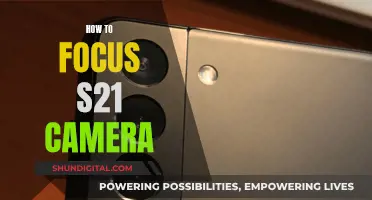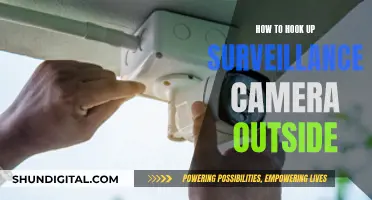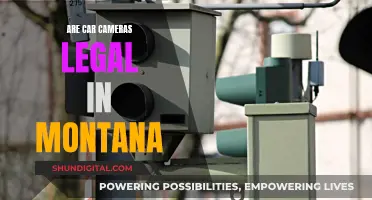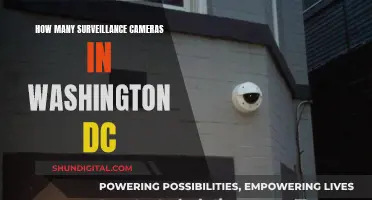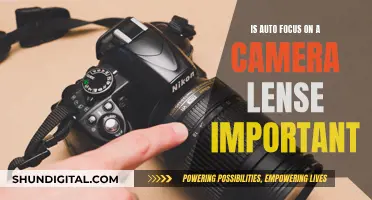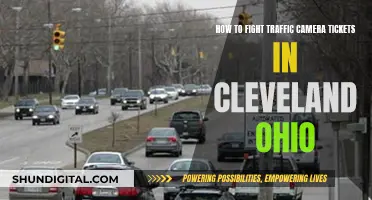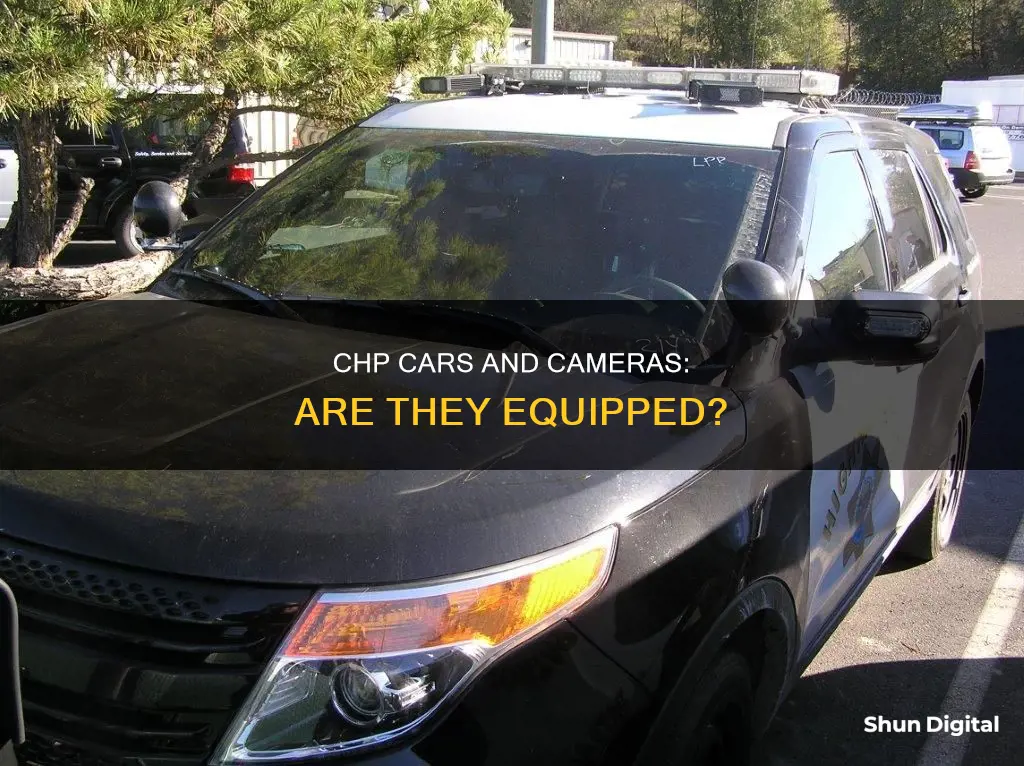
The California Highway Patrol (CHP) has implemented Mobile Video/Audio Recording Systems (MVARS) in 2,000 squad cars. MVARS are dashboard-mounted cameras that record arrests and provide visual feeds from inside and outside the squad car. The cameras are always on and face forward at all times. This setup helps maintain consistency in footage from one arrest to another and reduces the chance of officer mistakes or misuse. CHP officers also have microphones attached to their shirts to record the audio of their interactions. While the use of MVARS has been associated with a decrease in the use of force by officers, some challenges include officers' reluctance to record interactions and technical issues with equipment.
| Characteristics | Values |
|---|---|
| Do CHP cars have cameras? | Yes, CHP cars have dash cameras. |
| What are the cameras called? | Mobile Video/Audio Recording Systems (MVARS) |
| Where are the cameras mounted? | On the dashboard or rear-view mirror, facing out of the windshield |
| Are the cameras always on? | Yes |
| Do the cameras face forward? | Yes |
| Are the officers recorded? | Yes, they have microphones attached to their shirts |
What You'll Learn
- MVARS (Mobile Video/Audio Recording Systems) are installed in 2000 CHP squad cars
- MVARS are always on and face forward at all times
- Footage from MVARS can be used to dispute traffic tickets
- MVARS can be used to hold officers accountable for any irregularities in procedure
- MVARS can be used to protect citizens from false charges and rough treatment

MVARS (Mobile Video/Audio Recording Systems) are installed in 2000 CHP squad cars
As part of their duty to protect drivers on California roads, the California Highway Patrol (CHP) has implemented Mobile Video/Audio Recording Systems (MVARS) in 2,000 squad cars. MVARS are dashboard-mounted cameras that record arrests. They are always on and face forward at all times to ensure footage consistency and eliminate officer mistakes. The cameras provide visual feeds from inside and outside the squad car.
MVARS footage can be used as evidence in DUI cases, helping or hurting the defendant's case. For example, if the video shows the defendant acting belligerent or intoxicated, it can give the jury a negative impression. On the other hand, if the video captures irregularities in procedure or violations of the defendant's rights, it can help get the case dismissed. Under California law, defendants have the right to obtain and use MVARS footage as evidence in their cases.
The use of MVARS and similar recording devices by law enforcement has been shown to reduce the use of force by officers. In one study, the use of force by officers dropped by over two-thirds when they were equipped with wearable cameras. This suggests that the presence of cameras can help prevent unnecessary acts of violence by officers.
Despite the benefits of MVARS, there have been challenges with their implementation. Officers may not always want their interactions recorded, and there have been reports of footage being unavailable due to technical issues or the camera not being activated. Additionally, officers may bring suspects to areas outside the camera's range. To address these issues, some have called for mandatory police policies requiring the proper maintenance and use of audio and video recording devices during all citizen interactions.
Charging Your Roku Doorbell Camera: A Step-by-Step Guide
You may want to see also

MVARS are always on and face forward at all times
The California Highway Patrol (CHP) has implemented Mobile Video/Audio Recording Systems (MVARS) in 2,000 squad cars. MVARS are dashboard-mounted cameras that record arrests and provide visual feeds from inside and outside the squad car. They are not handheld devices.
The forward-facing, always-on nature of MVARS ensures that footage is consistently captured from the same perspective. This consistency is crucial for maintaining the integrity of the recorded evidence. By having the camera always on and facing forward, officers can focus on their duties without worrying about manually operating the camera. The system automatically captures and records the interactions, reducing the potential for user error or intentional tampering.
The MVARS setup also helps to address concerns about officer accountability and transparency during arrests. With the camera constantly recording and facing forward, the system can capture the entirety of an interaction, reducing the likelihood of crucial moments being missed or omitted. This consistent and comprehensive recording can be beneficial for all parties involved, providing a reliable record of events that can be reviewed if needed.
Surveillance Camera Wiring: A Guide to Running Cables
You may want to see also

Footage from MVARS can be used to dispute traffic tickets
MVARS (Mobile Video Audio Recording System) is a system of cameras installed on the dashboards of law enforcement vehicles. MVARS is always on and records footage from inside and outside the car once the officer initiates enforcement action. The system is designed to provide transparency and accountability during police stops and arrests. The footage can be used as evidence in court and can be requested by the defendant's lawyer.
In the context of traffic tickets, MVARS footage can be beneficial for disputing a ticket or citation. For example, it can show that a driver used their blinker, stopped at a stop sign, or was not swerving, contradicting an officer's account. This evidence can demonstrate that an officer did not have probable cause to pull over a driver, which could lead to a dismissal of the case. MVARS footage can also capture field sobriety tests, which can either support or refute an officer's claims about a driver's intoxication level.
However, MVARS footage can also hurt a driver's case. For instance, if the video shows a driver swaying, stumbling, or acting belligerent, it can give a negative impression to a jury, regardless of whether the driver was legally impaired. Therefore, it is essential to carefully review the footage with legal representation to determine how it may impact a case.
While MVARS is widely used by the California Highway Patrol, it is not mandatory for all law enforcement agencies to employ dash cams due to factors such as cost. As a result, there may be cases where MVARS footage is unavailable. In such instances, individuals have the right to record police officers during a traffic stop as long as it is done publicly and without interference, providing additional transparency.
Understanding Camera's Selective Focus: Creative Photography Technique
You may want to see also

MVARS can be used to hold officers accountable for any irregularities in procedure
The California Highway Patrol (CHP) has implemented Mobile Video/Audio Recording Systems (MVARS) in 2,000 squad cars. MVARS are dashboard-mounted cameras that record arrests and provide visual feeds from inside and outside the squad car. The system also includes a microphone attached to the officer's shirt to record audio.
For example, in one case, a driver was charged with "Drive in the right lane on a road with a speed limit over 80 km/h". The ICV footage from the officer's car showed that the driver was travelling at a steady 110 km/h and was not inconveniencing other drivers. As a result, the magistrate imposed a minimal fine of $50, demonstrating how MVARS can help hold officers accountable and ensure fair outcomes.
In another instance, a driver was pulled over by the CHP and received a ticket for an offence. The driver was able to review the dash cam footage and use it as evidence to get off with a warning. This showcases how MVARS can provide valuable evidence to support or refute claims made by officers.
While the use of MVARS is not mandatory and varies across agencies, it has been effective in reducing the use of force by officers and increasing transparency and accountability in arrests.
Remotely Monitoring Computer Cameras: A Step-by-Step Guide
You may want to see also

MVARS can be used to protect citizens from false charges and rough treatment
The California Highway Patrol (CHP) has implemented Mobile Video/Audio Recording Systems (MVARS) in 2,000 squad cars. MVARS are dashboard-mounted cameras that record arrests and the events leading up to them. The evidence from an MVARS can be used to protect citizens from false charges and rough treatment in several ways.
Firstly, MVARS provide an objective and unbiased record of interactions between law enforcement and civilians. The footage can be used to refute or corroborate claims made in a police report. For example, in Driving Under the Influence (DUI) cases, MVARS footage can show whether a person was staggering, slurring their words, or failing a field sobriety test. This can either help or hurt a person's case, depending on the circumstances.
Secondly, MVARS promote transparency and accountability within law enforcement agencies. The recordings can be used to assess officers' conduct and ensure they adhere to professional standards and ethical practices. MVARS can capture any improper actions or use of unnecessary force by police officers. This can be crucial evidence if a person's constitutional rights have been violated during an arrest.
Thirdly, MVARS can help protect citizens from false charges by providing precise and accurate recordings of the events leading up to and during an incident. The audio and video components can capture conversations, driving patterns, and other relevant details that may be missed or misremembered in verbal testimonies. This can help establish the context of a situation and potentially reveal discrepancies between a person's account and the police report.
Finally, MVARS can be used to challenge allegations in a police report. For example, if a person claims they were pulled over without probable cause, the MVARS footage can show whether the officer had a valid reason to initiate the traffic stop. Similarly, if a person alleges they were mistreated or their rights were violated during an arrest, the footage can be used as evidence to support their claim.
While MVARS can be a powerful tool for protecting citizens' rights, it's important to note that they are not always required by law, and their use may vary across different police departments. Additionally, obtaining MVARS footage may require a public records request, and there may be cases where the footage is exempt or sensitive and cannot be released. Nonetheless, when available, MVARS can provide valuable evidence to protect citizens from false charges and ensure fair treatment during legal proceedings.
Breathalyzers and Cameras: What's the Link to Your Privacy?
You may want to see also
Frequently asked questions
Yes, CHP vehicles are equipped with dash cameras, also known as Mobile Video/Audio Recording Systems (MVARS).
The MVARS in CHP cars record audio and video footage from inside and outside the squad car.
The MVARS are mounted on the dashboard or rearview mirror of squad cars, always facing forward. They are always on to make the footage consistent from one arrest to another.
Yes, you can request CHP car camera footage through a subpoena process.
No, officers are not obligated to show anyone the camera footage at the time of the incident as it could hinder their ability to manage traffic flow and may pose a safety concern.


